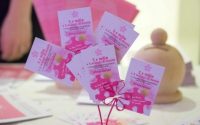Overweight in Lockdown more chips red meat and sugary drinks for children
Overweight, in Lockdown more chips, red meat and sugary drinks for children
Chips, red meat and sugary drinks: they are the foods for which, during last year’s Lockdown, a substantial increase in consumption by children and teenagers was recorded. Increase in the face of which a decrease in time dedicated to sports and motor activities has also been recorded. This is what emerges from a study conducted by a group of Italian and American researchers on a sample of 41 children and teenagers of Verona, in which the lifestyles and food habits were compared before and during the Lockdown last spring. The study, entitled ‘ Effects of Covid-19 Lockdown on Lifestyle Behavors in Children with obesity Living in Verona, Italy: A Longitudinal Study ’ was published in the magazine ‘ Obesity.
In Research Journal ’.
By the responses provided by the participants
From the responses provided by the participants it emerged that in the face of the decrease in the time spent in motor activities, the hours spent on the PC and those of sleep increased. “ Pandemia- comments Leo Venturelli, head of the communication of the Italian Society of Preventive and Social Pediatrics (SIPPS)- has implemented a process of transformation in the lives of parents and children: the family had to support children and young people during the periods of closing schools ”. The interruption of the didactic activities in the presence, in fact, represented a problem not only from an educational point of view and sociality, but also from a food point of view. To confirm, Venturelli recalls that “ the school canteen guaranteed a nutritional and balanced contribution to all children, regardless of income and economic and family situation.
Lunch at home has resumed with a distance teaching. The most fragile families had to cope with the situation, with the risk of administering very processed and high calorie -power meals, but often unbalanced in terms of the constituents: the effect was the effect; 8221;.
In consideration of these data, the SIPPS has been collaborating for some time at ‘ nutriatto ’, the nutrition project conceived by Nestlè, making available for scientific advice three of its nutritionists. “ the ‘Nuttapitto’ project Giuseppe Di Mauro, SIPPS- has developed in Italy thanks to the scientific collaboration of our company and of the Biomedical Campus University of Rome. At this moment- he reiterates- the ‘nutriato’, with his dietary proposals reasoned and based both on the right balance of the food components and on the creativity of the preparation, but also on the simplicity of the chosen foods, can be of fundamental importance in the#8217; help parents in the education of children in a healthy diet, making balanced and correct food choices, with the active participation of children and teenagers to build the ideal dish ”.
Micaela Gentilucci, nutritionist
Micaela Gentilucci, nutritionist, who collaborates in scientific advice on behalf of the Sipps, also specifies that “ Italy continues to be, among European countries, the one with the highest values of weight excess in the population of school age : the percentage of overweight children is in fact- 20.4%”.
The good growth of the little ones is also at the center of the commitment that gave birth to the Nestlé for Healthier Kids, an international initiative that has the objective of helping 50 million children to live in a healthier way by 2030. ‘Nuttapitto’ is part of this mission: to make parents a concrete contribution, to child -friendly, to encourage good eating habits.
“ the ‘Nuttapitto’- Guide is still to clarify by Mauro- is a book for the family and the dish, provided as a visual support, is a simple and intuitive system for everyone. On the plate, of real size, children aged 4 to 12 can ‘ play ’ to insert the raw foods to understand in concrete terms how lunch or dinner is built, having a parent next to them, in a simple way, to eat well and healthy. Being able to follow all procedures actively means participating in food choices and receiving quality educational messages from parents in concrete terms, involved in this fun but scientifically valid, health education activities ”.

